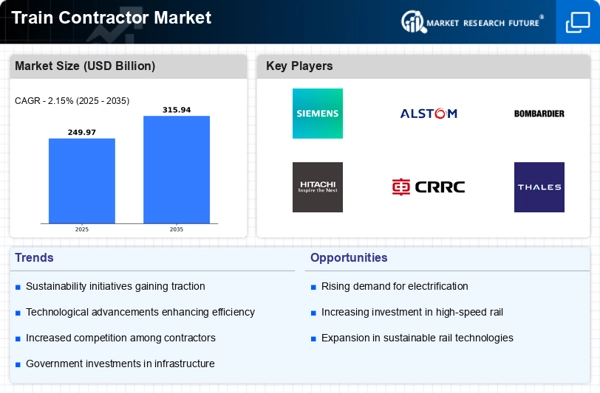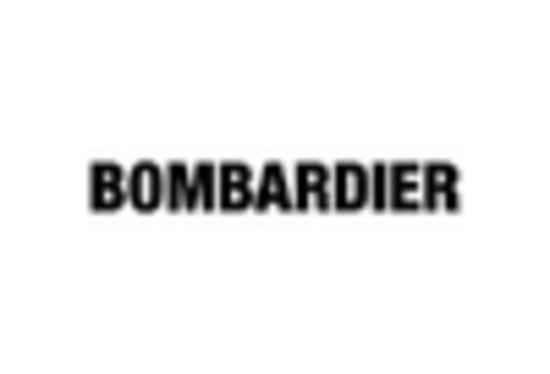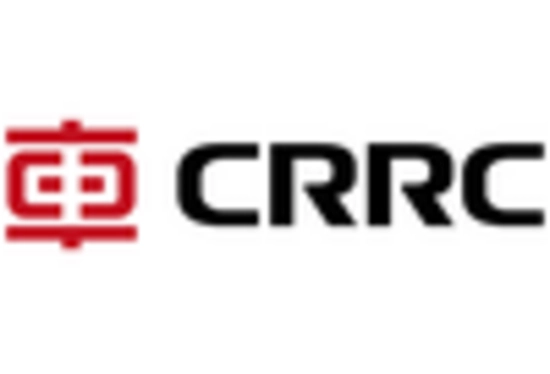The Train Contractor Market is currently characterized by a dynamic competitive landscape, driven by technological advancements, sustainability initiatives, and increasing demand for efficient rail systems. Major players such as Siemens (Germany), Alstom (France), and CRRC Corporation (China) are at the forefront, each adopting distinct strategies to enhance their market positioning. Siemens (Germany) emphasizes innovation through digital solutions, focusing on smart rail technologies and automation, while Alstom (France) is heavily investing in sustainable transport solutions, particularly in hydrogen-powered trains. CRRC Corporation (China) leverages its extensive manufacturing capabilities to dominate the Asian market, while also expanding its footprint in Europe and North America through strategic partnerships and acquisitions. Collectively, these strategies contribute to a competitive environment that is increasingly focused on technological differentiation and sustainability.
In terms of business tactics, companies are localizing manufacturing to reduce costs and enhance supply chain resilience. This approach is particularly evident in the context of geopolitical tensions and supply chain disruptions. The market structure appears moderately fragmented, with a mix of established players and emerging companies vying for market share. The collective influence of key players shapes the competitive dynamics, as they engage in strategic collaborations and mergers to bolster their capabilities and market reach.
In August 2025, Siemens (Germany) announced a partnership with a leading technology firm to develop AI-driven predictive maintenance solutions for rail systems. This strategic move is likely to enhance operational efficiency and reduce downtime, positioning Siemens as a leader in the digital transformation of rail transport. The integration of AI into maintenance practices could significantly lower operational costs and improve service reliability, thereby attracting more clients.
In September 2025, Alstom (France) unveiled its latest hydrogen train prototype, which is expected to enter commercial service by 2026. This initiative underscores Alstom's commitment to sustainability and positions the company as a pioneer in the green transport sector. The introduction of hydrogen-powered trains may not only reduce carbon emissions but also cater to the growing demand for eco-friendly transportation solutions, potentially reshaping market expectations.
In July 2025, CRRC Corporation (China) completed the acquisition of a European rail technology firm, enhancing its technological capabilities and market presence in Europe. This acquisition is indicative of CRRC's strategy to diversify its offerings and strengthen its competitive edge in the global market. By integrating advanced technologies from the acquired firm, CRRC may improve its product portfolio and better meet the needs of international clients.
As of October 2025, the competitive trends in the Train Contractor Market are increasingly defined by digitalization, sustainability, and the integration of artificial intelligence. Strategic alliances are becoming more prevalent, as companies recognize the need to collaborate to innovate and meet evolving customer demands. Looking ahead, competitive differentiation is likely to shift from traditional price-based competition to a focus on innovation, technological advancements, and supply chain reliability. This evolution suggests that companies that prioritize these aspects will be better positioned to thrive in an increasingly complex and competitive landscape.


















Leave a Comment